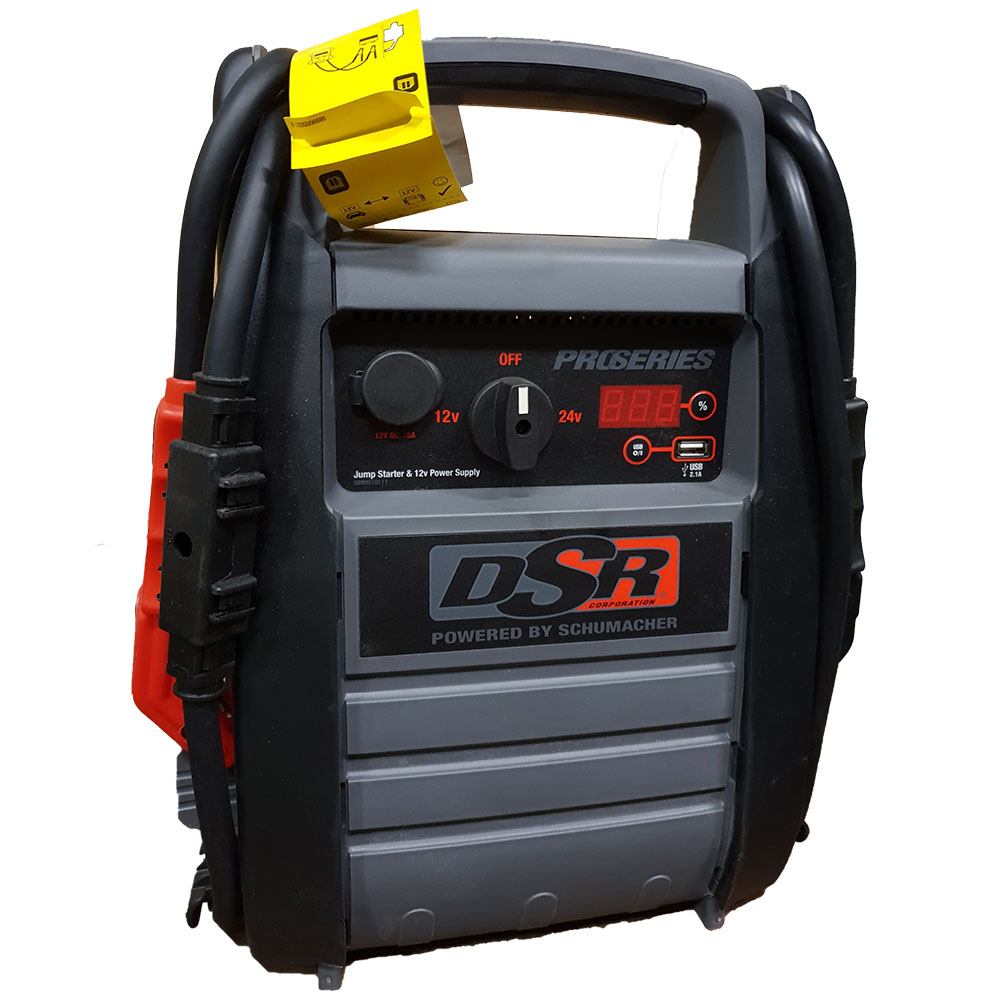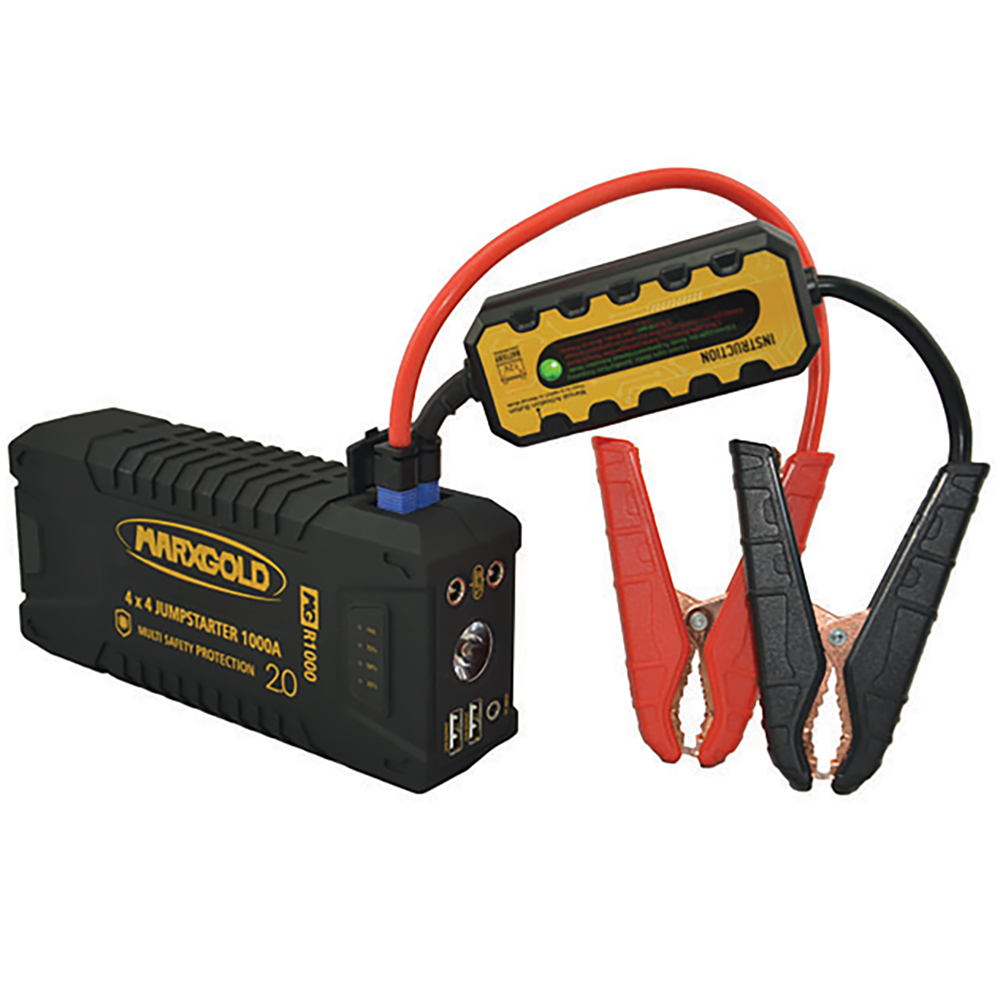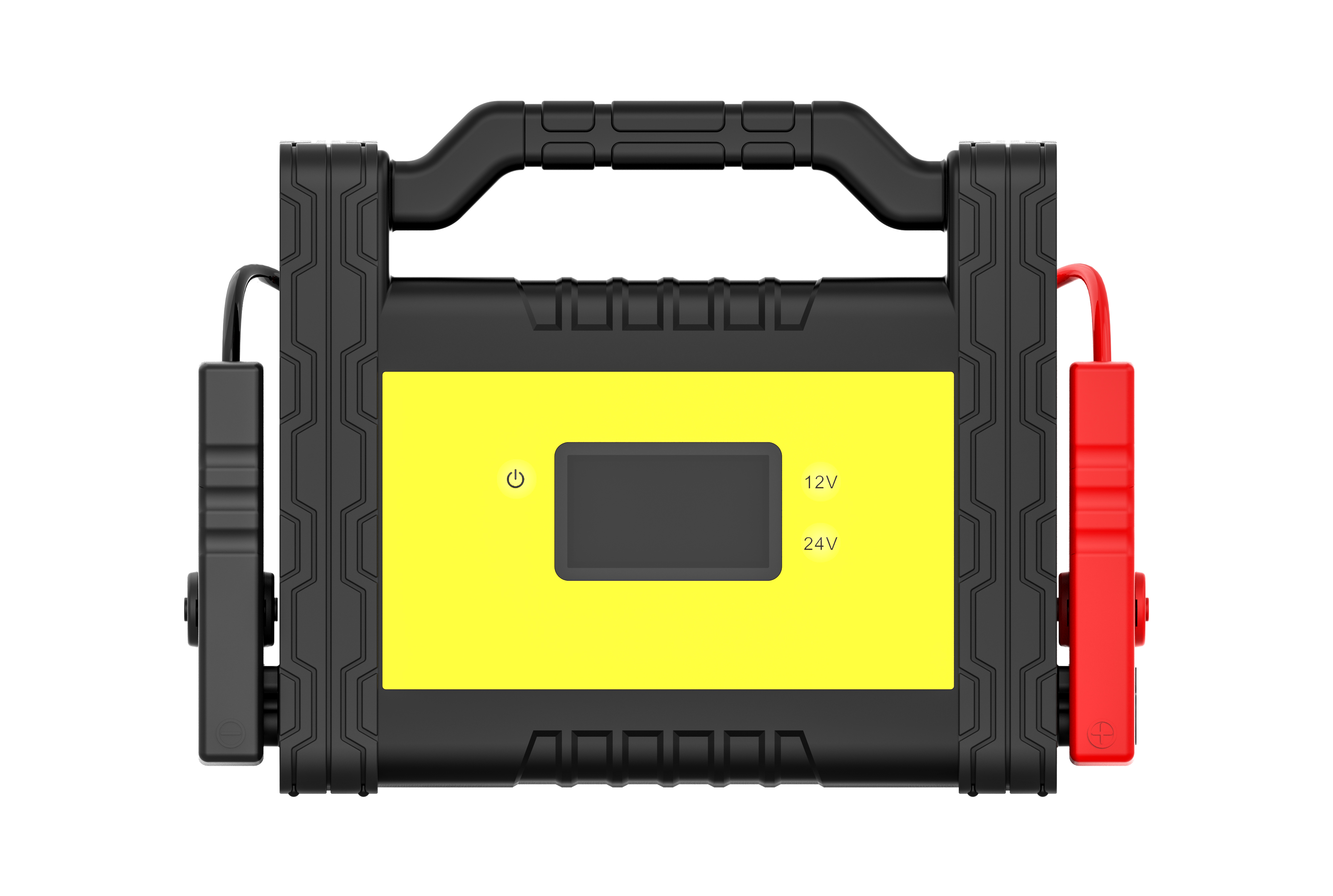Posted by Mark Bygrave on 18th Sep 2020
Jump Starters- So many types - What is the difference.

Jump Starters
So many different types, what is the difference and which one is the best for me.
This is a question we get asked a lot.
To help you answer that question, I will explain the advantages and disadvantages of the different types available today.
We will be discussing the 3 popular styles available today.
Traditional lead acid battery style, Lithium-ion battery style and supercapacitor style jump starters.
Summary of my ratings with 10 being the best tested
| Type | Portable | Power/Weight | Energy/Weight | Maintenance | Life |
| Lead Acid Style | 3 | 5 | 10 | 2 | 4 |
| Lithium-ion Style | 10 | 10 | 6 | 6 | 5 |
| Supercapacitor Style | 8 | 9 | 2 | 10 | 10 |
I will be talking about Power and Energy a bit so here is a quick explanation.
What is the difference between power and energy? Power is ‘how much can I give something?’ I.e.: Starting an engine requires a lot of power but only for a short duration. Energy is ‘how long can I run something?’ I.e.: Running a radio, fan, or refrigerator overnight. This requires a small amount of power but a large amount of energy.
quoted from Mini Instruction Rev C by KBi (KoldBan International www.koldban.com)
Traditional Lead Acid Battery Type

Traditional lead acid battery style are jump starter packs which have a style of lead acid battery in them. These batteries can be in many different sizes and battery types like traditional crank batteries or high output AGM. They are usually configured in either 1 battery for 12 volt jump starting or 2 batteries switched between parallel and series to achieve both 12 volt and 24 volt jump starting. The lead acid batteries provide a good source of power for jump starting and also provide a great energy source.
Advantages
Lead acid batteries are a great source of power and cheap to produce. Because they have an actual Lead Acid Battery inside them, they have the features of a battery. They provide power for jump starting and also are a great source of energy. The more power or energy you need the larger the battery or more batteries may be needed.
Disadvantages
They are heavy because they are made with lead. Every time you charge and discharge the battery it permanently loses a bit of its ability to fully recharge. Most batteries are good for 200 to 500 cycles (Charges and discharges) Lead Acid batteries use a chemical reaction to charge and discharge. They have a relative high amount of resistance while charging and can take many hours to charge. The high internal resistance also limits the amount of power the battery can supply out.
Life
As with all batteries, they have a life and it will depend on how many discharges and how deep the discharges are. Lead Acid batteries use a chemical reaction to charge and discharge. If lead acid batteries drop below 9 volts, permanent damage can occur. Also, if you haven't used your jump starter for months or years, it doesn't mean the battery will still be new because it hasn't been used. Like all batteries, they will deteriorate over time
Summary
Lead Acid jump starters offer a good amount of power and the highest amount of energy. They have the ability for extended cranking periods. They will require constant maintenance to ensure the jump starter is ok when you need it. They are quite heavy to move around.
Lithium-ion Battery Type



Lithium battery style jump starters are built with one of several styles of lithium-ion battery in them. Although mostly similar there are differences in the battery style that can relate to the batteries performance.
Advantages
The main advantage of the Lithium-ion style of jump starter is their size and weight. They are very compact and portable. A periodic charge to top them up is all that is needed to maintain them and can usually be recharged up to 1000 times. They can be drained completely (deep discharge) without damaging the battery. The batteries are a very high power to weight ratio and can also be used as an energy source. Overall they are lightweight and provide a good balance of power, energy, life cycle and safety.
Disadvantages
Lithium-ion jump starters are usually small and include short relatively lightweight cables. As the modern engine including diesels are designed to start within the first second or two, this is ok. If you need to do extended heavy cranking the light cables can overheat and are not ideal in this situation. Lithium is also a volatile mineral and the various batteries are designed with different compounds to improve the safety of using lithium-ion.
Life
As with all batteries, they have a overall life and a service life. Overall life is usually between 3 and 7 years. Service life is usually around 500 - 1000 recharges. Lithium-ion batteries use a chemical reaction to charge and discharge. Also, if you haven't used your jump starter for months or years, it doesn't mean the battery will still be new because it hasn't been used. Like all batteries, they will deteriorate over time
Summary
Lithium-ion jump starters are very popular because they are lightweight and portable. Their great power to weight ratio and the ability to also provide a source of energy for charging devices and running appliances is well accepted.
Supercapacitor or Batteryless Type



The first thing to know is that Supercapacitors are not a battery. The supercapacitor or Ultracapacitor jump starters are essentially built using a type of Supercapacitor. There are many different technologies used to make supercapacitors but in the end the features are similar.
Advantages
Supercapacitors have virtually no internal resistance allowing them to provide huge amounts of power from a small amount of energy. Supercapacitors can also recharge very quickly in around 30 seconds to 3 minutes. They use a physical reaction to charge an discharge, not chemical. Because of this they can be recharged upwards of one million times. They can also remain at 0 voltage for extended periods including years without damage to the supercapacitor.
They are maintenance free.
Disadvantages
Depending on the Supercapacitor design, some lose their charge quickly and others maintain their charge. If you have one that stays flat until you need it, you will need around 6 volt minimum in a vehicle battery to recharge the Supercapacitor otherwise you will need to use an alternate power source to charge it. Supercapacitors have a relatively small amount of energy and are not good for powering devices and appliances.
Life
Because Supercapacitors use a physical reaction, the life of the actual Supercapacitor is only limited by the material it is made from. Most recreational jump starters say around 500,000 recharges or 10 years. Our commercial versions are good for greater than 1,000,000 recharges and would be capable of lasting for many more years.
Summary
Supercapacitor jump starters are reliable, long lasting and completely maintenance free. They will provide you with years of service as a jump starter. They are not designed for use as an energy source.
We hope this may help you decide which style of jump starter is suited to your needs.
Any questions please contact us on
0428198423 or sales@marxgold.com
To learn more about Supercapacitors see our previous blog here
https://www.marxgold.com/blog/ultracapacitors-for-...
To learn more about Lithium-ion Battery types here is a website link to the Australian Academy of Science Below are the experts in the review.
https://www.science.org.au/curious/technology-futu...
Click here to Subscribe for our great deals and the latest information

